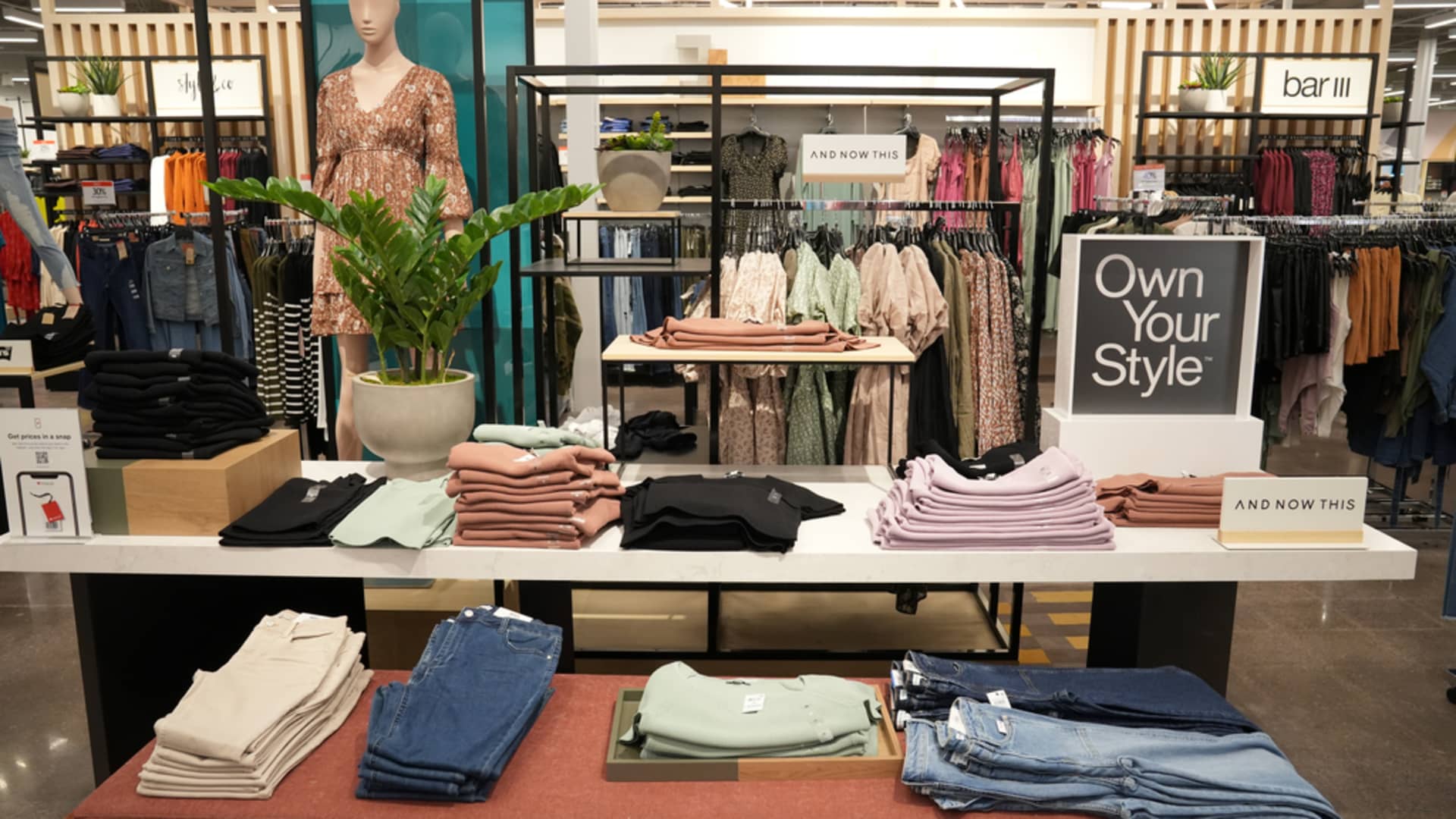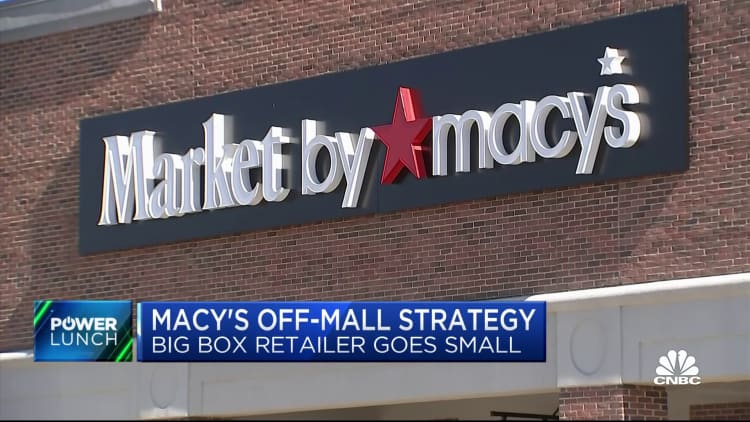
Macy’s is opening more small-format stores across the country. They are roughly one fifth the size of its typical locations.
Macy’s
Macy’s on Tuesday said it will open up to 30 smaller stores in strip malls over the next two years, as the retailer chases customers out of dying malls and into bustling suburbs.
The company did not announce locations, but said the additional stores will start to open next year.
The expansion marks an inflection point for the department store operator, which has looked for ways to refresh its legacy brand, cope with dwindling mall traffic and compete with retailers that have stolen away shoppers. Macy’s has faced even more challenges in the past six months, as middle-income Americans — who drive most sales at its namesake stores and website — watch their spending and rack up debt on their credit cards. The company cut its full-year forecast this summer and expects weak sales to persist.
Chief Stores Officer Marc Mastronardi said small-format stores are part of the solution. Macy’s has tested the shops, which are roughly one-fifth the size of its traditional mall stores, for nearly four years. The stores offer a slimmed-down mix of merchandise, host local events, and have a more modern and open look. Plus, they’re next to big-box stores, grocers and popular off-price retailers like TJX-owned T.J. Maxx.
“The high level of convenience in places that have a lot of traffic — that’s been the secret sauce,” Mastronardi said.
Macy’s smaller, off-mall stores have spacious fitting rooms and a curated mix of merchandise that’s frequently swapped out. Beauty, toys and career apparel have been big sellers at the stores.
Macy’s
The off-mall stores have put up stronger results than the rest of Macy’s. And based on the company’s own shopper surveys, the stores get high marks for being easy to shop, neat, and staffed by helpful and friendly employees, Mastronardi said.
Macy’s small-format stores open for more than one fiscal year have posted comparable sales growth on an owned-plus-licensed basis from the beginning of the fiscal year, which began in late January, through the fiscal second quarter, which ended July 29. Comparable sales, a retail industry metric, aims to take out the impact of store openings, closures and renovations to allow better year-over-year comparisons.
Across the rest of the company, comparable sales on an owned-plus-licensed basis declined by roughly 7% in both the fiscal first quarter and fiscal second quarter. Along with Macy’s namesake stores, that metric includes trends at higher-end department store Bloomingdale’s and beauty chain Bluemercury, which have generally outperformed the namesake stores.
By the end of this year, Macy’s will have 15 of the smaller stores, not including the announced expansion. Three are Bloomie’s, a smaller version of the Macy’s-owned Bloomingdale’s. The up to 30 new stores that are coming will be called Macy’s. The company is phasing out Market by Macy’s, the name it initially used for the smaller Macy’s stores.
Macy’s has dealt with the skepticism from investors who often link its fate with those of struggling shopping malls. Shares of the company have largely been on a downward trend since 2015. So far this year, the company’s stock is down about 44% even as the S&P 500 has risen about 12% during the same time period.
Led by CEO Jeff Gennette, the company has focused on five growth drivers, including off-mall expansion. It has also refreshed and debuted new private brands, launched a third-party marketplace online, focused on luxury brands, and increased personalized offers and communication with customers.
Gennette will soon pass the reins to Tony Spring, CEO of Bloomingdale’s, as he retires early next year.
Oliver Chen, a senior equity research analyst at Cowen who covers retail and luxury goods, said Macy’s is under pressure to appeal to younger consumers and differentiate from competitors. Those rivals include specialty retailers like Ulta Beauty and Sephora and off-price retailers or fast-fashion players where shoppers may get a better deal or superior service.
“[Macy’s leaders] don’t have their head in the mud,” he said. “They understand the need to be relevant and grow and to think about off-mall.”
He pointed to some signs of progress, including the return of Nike and Under Armour merchandise to stores and its website and the launch of a new women’s private brand, On 34th.
Shoppers who have come to the smaller stores look similar to Macy’s typical customer, but have a more curated mix of merchandise to choose from since stores are smaller, Mastronardi said. Popular categories at the small-format stores have been toys, beauty and career apparel, according to the company.
Macy’s has opened the stores in three different kinds of markets. In some cases, it has put them in areas that already have a large store, but also have high demand. It has used others to replace stores in floundering malls. Macy’s has also broken into new regions where it does not have stores.
Mastronardi said the company has tracked sales data in markets where Macy’s has a typical mall store and an off-mall store. He said the retailer has not seen signs of the new shops cannibalizing its existing stores, where sales just move from one to the other.
“What we’re seeing is it’s really just an extra visit into the Macy’s brand,” he said.








